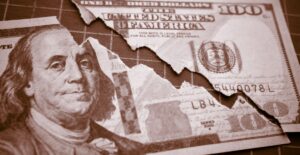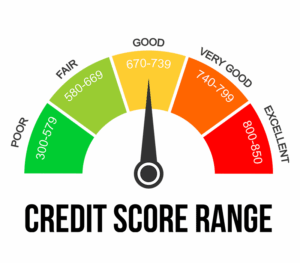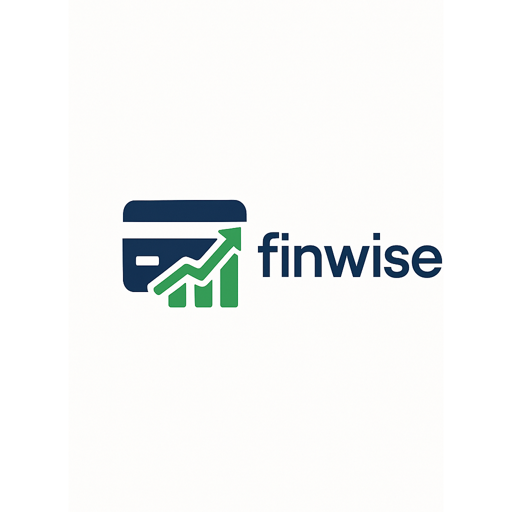Tariffs, Inflation and Stagflation: What Credit Card Users Need to Know
As the U.S. economy grapples with a labyrinth of cliffs and trap doors, which many believe could lead the country into recession, credit card holders are now beginning to experience an effect from broader economic fundamentals — tariffs, inflation, and the increasing specter of stagflation. Though these can feel in the abstract, they have real-world implications that many people are dealing with right now as they juggle household budgets and credit card debt.

Here, we’ll explain what these economic trends are, how they are impacting credit cardholders now and what you can do to protect your financial well‐being.
What Is a Tariff and How Does It Affect You?
Tariffs are effectively taxes that a government places on imported goods. When the U.S. slaps taxes on products from other countries — usually to help American industries or during trade talks — the taxes make those goods more expensive by the time they reach store shelves.
If tariffs are imposed on electronics or clothing manufactured overseas, for instance, retailers often immediately pass that cost on to consumers. It’s another aspect of overall cost of living that cuts into how much you spend — and borrow — with your credit card.
When the price of daily necessities increases, it becomes difficult for consumers to strike a balance between income and expenditure, leading many to rely on credit. That type of behavior, if understandable, can result in growing credit card balances and eventually, to more exposure to high cost debt.
Inflation: The Hidden Credit Killer
Inflation Inflation is a term used to describe a general rise in price in an economy. In 2022 and 2023, inflation rose to levels that were not seen in more than four decades. Although it has eased a bit in 2024, prices continue to be high, with some categories, like food, housing and transportation, stubbornly so.
For credit card holders, inflation creates two main issues:
Loss of your ability to purchase: The dollar just doesn’t go as far, which means you need to use your credit card just to make ends meet.
Rising interest payments: The Federal Reserve frequently increases interest rates when combating inflation. As most credit cards have variable APRs, your interest rate goes up accordingly, and it becomes more expensive to carry a balance.
For instance, if your card’s APR leapt from 17% to 22%, a $5,000 balance could cost hundreds more a year in interest — even if you didn’t change your spending habits.
The Emergence of Stagflation: A Double Threat
Stagflation is a toxic economic stew of slow growth, high inflation and rising unemployment — a rare and perilous combination. While it has not been formally announced, there were some economists who think that the U.S. economy is on its way to a mild bout of stagflation amid recent reports from the Federal Reserve indicating a softer pace of consumer spending accumulation, slower hiring, and ongoing price push-throughs.
Why does this matter for credit card holders?
The consequences of stagflation are an economic oxymoron in all directions:
Job uncertainty: In cases of rising unemployment, folks depending on credit cards may find it hard to keep up minimum payments.
Prolonged high prices: Even if growth cools, inflation might not, adding to the pressure on consumers who are already stretched thin.
Poor financial flexibility: Banks may tighten lending standards during stagflation, making it more difficult to obtain new lines of credit or balance transfer offers.
In short, stagflation could impose something of a financial trap in which debt becomes harder to pay off, at the same time that the costs of daily living keep climbing.
How Credit Card Issuers Respond
Credit card companies are sensitive to the economy’s pulse. When they see signs that the economy is under strain, they might take proactive steps that can affect cardholders:
Boosting APRs: The vast majority of cards have variable rates pegged to the Fed’s benchmark. The higher the rates, the more you will pay in interest.
Reduced credit limits: When lenders are concerned they’ll face greater default risk, they can lower lines of credit — even for good customers.
Modifying rewards structures: Issuers may devalue rewards programs or raise redemption thresholds in order to save money.
This can leave cardholders fewer options, less of a safety net and more-expensive borrowing, further complicating financial planning.
How To Use Your Credit Cards In Today’s Economy
Even as we face economic uncertainty, there are actions you can take today to safeguard your financial health:
Prioritize Paying Off High-Interest Debt
Keeping a balance is more expensive than ever, as interest rates rise. Concentrate on those with the highest APRs, or pay off the one that allows you to pay the least total interest over time (the avalanche method).
Build an Emergency Fund
If you don’t have one already, focus on setting aside a minimum of 3-6 months of expenses in a high-yield savings account. This can help discourage people to turn to credit cards when they suddenly have a job loss or unexpected expense.
Keep track of what you’re spending… and adjust your budget fifty-seven times.
You may be suffering from budgetary creep. Spend some time looking over your monthly statements, find wasteful spending, and redirect that wasteful spending toward killing your debt or saving for your future.
Avoid New High-Interest Debt
This is not the time to be taking on debt for large purchases unless you have to. If you must borrow money, do consider 0% APR balance transfer offers or personal loans with fixed interest rates.
Monitor Your Credit Limit and Credit Score
A rapid decrease in your limit can increase your credit utilization ratio, which is bad for your score. Monitor your credit reports closely and be prepared to challenge errors or bargain with lenders.
What to Expect Moving Forward
Though the course of the U.S. economy is yet to be determined, many economists and financial experts believe that the country will experience ongoing economic uncertainty/instability through 2025. That’s why credit card users need to keep their guard up, stay informed and stay proactive.
Lawmakers are also considering potential reforms — even discussing measures to cap credit card interest rates — but any action would be slow to develop. In the meantime, budgeting in a high-cost world will require discipline, cunning and adaptability.
Final Thoughts
The potential impacts of tariffs, inflation and the specter of stagflation are not just topics of conversation for economists and politicians — they have a meaningful impact on the average American family.
Knowing about those forces helps you to be a smarter credit card user. And whether that’s thinking about your spending, refinancing your debt or paying a little attention to economic news, small steps today are small steps that can have a big impact tomorrow.
Financial resilience matters now more than ever.
Our Post

High Interest Rates, Credit Cards and the U.S. Consumer: What to Know in 2025
The Note: How Decelerating U.S. Economic Growth Affects Using Consumer Credit


